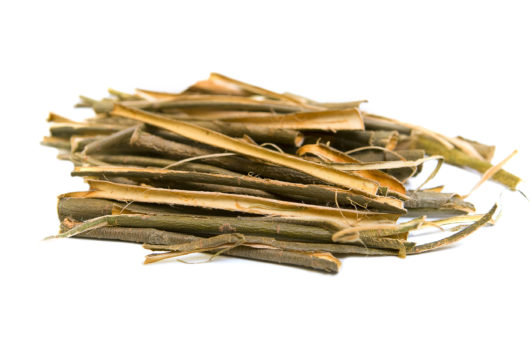If you’re struggling with acne, allow us to introduce you to the over the counter MVP, salicylic acid. It’s one of the most commonly used ingredients in skincare, and it can be very effective in treating certain types of acne and other skin care conditions. But what is salicylic acid and why is it so powerful? We’ve got answers for you.

What is salicylic acid?
Derived from the chemical compound Salicin, Salicylic Acid is found naturally in willow tree bark. It’s a beta hydroxy acid (BHA), meaning it’s oil-soluble and able to penetrate the skin deeper, in comparison to alpha hydroxy acids, which are water-soluble. It actually contains the same anti-inflammatory ingredients that you find in Aspirin (acetylsalicylic acid), which is what gives salicylic acid its antibacterial and drying effects — two important factors when it comes to treating acne.
The ingredient is also a keratolytic, which means that it dissolves or breaks down keratin, the protein that makes up the outer layer of skin.
What makes salicylic acid such a go-to skin care ingredient?
Salicylic acid is effective on all skin types, but most notable for the way it treats acne. The acid is able to penetrate into our pores to clear out the bacteria and dead skin cells that get trapped in our skin’s sebum and lead to acne. It effectively unclogs pores, making it great for blackheads and whiteheads.
In addition to treating all sorts of acne, salicylic acid can also be used to treat everything from dandruff, seborrheic dermatitis, keratosis pilaris, and psoriasis to calluses, corns, and other conditions related to the build up of excess skin cells. Because of those keratolytic properties — salicylic is able to easily exfoliate and detach dead skin cells from our live ones.
Where can I find salicylic acid?
Salicylic acid can be found in so many products — acne cleansers, lotions, and spot treatments, to name a few. Salicylic can be used as a cleanser, and also as a leave on treatment in masks, lotions and spot treatments.
When opting for a salicylic acid-based product, the amount of salicylic acid in that product is important to note. A common mistake people make is immediately choosing the product with the highest percentage of the ingredient. Over-the-counter salicylic acid products will contain anywhere between 0.5% and 2%. If you are just beginning to use salicylic acid products, remember that it has drying effects on the skin so starting with a mild dosage is best — and often just as effective.
Who benefits most from using salicylic acid?
Anybody who wants a gentle exfoliator can benefit from salicylic acid! It’s best for tackling acne and degunking your pores, but as mentioned before, it can also be used to treat dandruff, seborrhea, psoriasis, and to remove corns, calluses, and warts.





I’ have every kind of comedone possible across my
T zone but mostly on my chin/jawline. I’ve used sacylic acid in the past but it always left my face with small red spots all over! I think I may be allergic. I’ve also tried glycolic acid but this tends to inflame my comedones and make the situation worse. What do you recommend? I’m 27 very fair skinned Caucasian and easily prone to scarring. I have hormonal acne as well the cyclical cystic type.